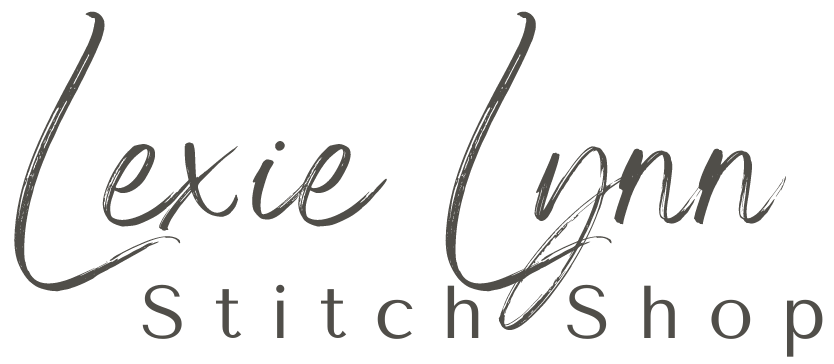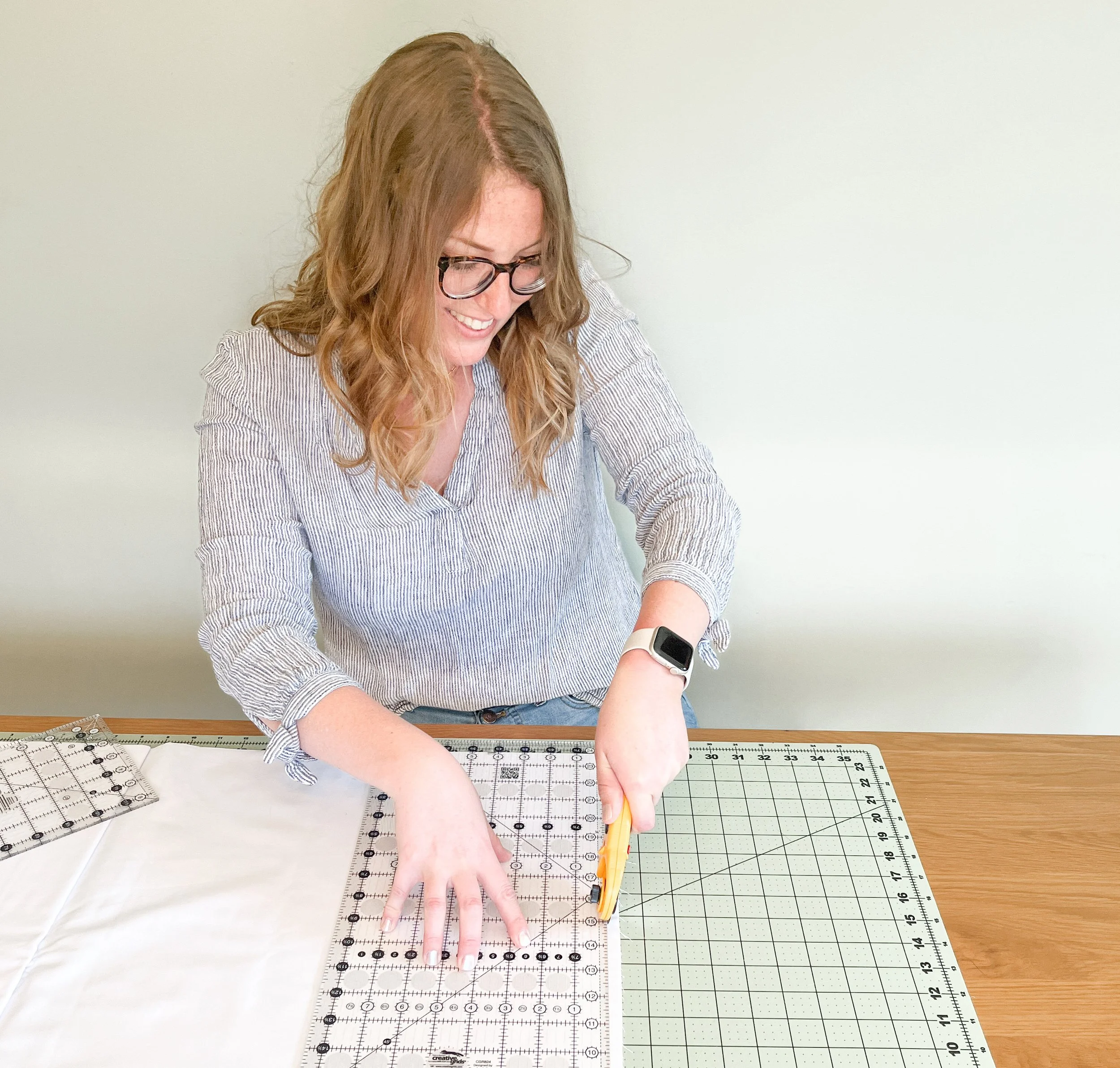7 Essential Tools and Supplies Every Quilter Should Own
DISCLOSURE: this post may contain affiliate links, meaning I get a commission if you decide to make a purchase through my links, at no cost to you. As an Amazon associate I earn from qualifying purchases. Please read my terms of use policy for more information.
New quilter wondering where to begin? Experienced quilter looking to add to your collection of supplies? Well you have come to the right place!
Today, I’m sharing the 7 tools and supplies that helped me tremendously when I began quilting. Here’s what we’ll cover:
Where do you even begin?
What is a rotary cutter?
The best rulers for cutting straight lines.
The perfect size cutting mat.
Which sewing machine brands are preferred by quilters.
Not all thread is created equal.
The ¼ inch foot.
Nothing like a hot iron and some starch.
Where do you even begin?
I was sewing on my own by age seven – making pajamas for my siblings and cousins, doll clothes, stuffed animals, you name it! When I got a bit older my interest in sewing grew and I wanted to learn how to quilt. My first quilt was a MESS! I was using poster board and pens to trace and hand cut my fabric, nothing was square, and the corners didn’t even come CLOSE to lining up. I’m an oldest child, type A, accountant, so you can imagine how hard this was for me!
It wasn’t until I learned about the tools I’m sharing with you today that I truly began to love quilting. They made the process SO much easier, taking away the pain points and enhancing the joy in seeing what I had created come to fruition.
I can’t wait to share these with you – are you ready? Let’s do it!!
So what is a rotary cutter anyways?
This is a great place to start because it was a GAME CHANGER for me! A rotary cutter is essentially an incredibly sharp pizza cutter. It can cut through several layers of fabric at a time and make cutting and preparing your fabric a breeze.
The best rulers for cutting straight lines.
Creative Grids makes the best non-slip rulers. They have several different sizes for all types of projects, but the best one to start with is the 8 ½ by 24 ½ size because it will meet all your basic needs. These rulers are great because they come with non-slip grips already on the back of them – not every ruler does.
I struggled so much in the beginning with my “cheap” ruler that moved around as I was cutting. This is not only annoying, but also dangerous (remember how sharp I mentioned the rotary blade is?). I know too many people who have severely sliced a finger because of a ruler slip. No thanks, not for me.
If you want to learn more about proper ruler usage, check out my post on 3 Things to Know about Using A Quilting Ruler Properly.
The perfect size cutting mat.
When you’re first starting out, you’ll want a cutting mat that is large enough so you can cut a full length of the fabric without shifting your fabric mid-cut. I would recommend a 36”x25” mat and I personally use the Fiskars Self Healing Eco Cutting Mat because the light color and dark lines are the least distracting for me.
Which sewing machine brands are preferred by quilters.
Nothing is more frustrating than sitting down to sew only to realize that your machine is jammed, throwing some nonsense error, or just straight up is not working. Ugh! While no machine is perfect and they all need a tune-up from time to time, there are a few brands that are recognized by quilters to be superior in quality and longevity. I personally sew on a Janome, as does my mom. I bought my machine 12+ years ago and foresee having it a long time still. A lot of quilters also use Brother or Bernina machines, but I cannot personally attest.
There are so many to choose from and while the price of some may deter you, the higher quality machine you get, the less often it will need service. In my early days of quilting I tried to use a cheap Singer I got on Black Friday discount, but I found I was buying new machines every couple of years because they just wouldn’t hold up.
Truthfully, the best machine is probably the one your grandma, mom, or other relative uses. Those machines have withstood the test of time and often contain more metal than plastic on the inside, which generally means they don’t break.
Not all thread is created equal.
Most quilters prefer to use cotton or a cotton blend of thread. While polyester thread may be cheaper, it is also more likely to damage your machine and possibly even the project you have worked so hard to create. The general rule of thumb is that you should be able to break the thread with your hand without it breaking skin. It also should not snap too easily. This helps determine if the thread is strong enough to hold your quilt together, but not so strong that it may rip through your fabric or tear up your machine. I prefer to use Aurifil thread, which comes in a variety of colors and weights, depending on your project.
The ¼ inch foot.
The good news about the ¼ inch foot is that most machines come with one. This foot is an important attachment to your machine, as all quilt patterns are written with a ¼ inch seem allowance. The foot has a guide that helps ensure your seems are all the same width without you doing too much thinking or finagling of the fabric.
If your machine didn’t come with one, here’s a 1/4 inch foot that will work with most machines. Double check how the feet on your machine attach.
Nothing like a hot iron and some starch.
When I started quilting I just used the iron I had at home without any water for steam. The more you sew and quilt, the more annoying the cord becomes and I ended up caving and purchasing a cordless iron. Not necessary, but VERY nice!
You might be wondering why I said not to put water in your iron for steam – after all, that fabric that’s been sitting in your closet for years is probably wrinkled! Quilters don’t use steam in their irons because it can stretch out the fabric. Instead, a starch spray can be used for initial ironing of the fabric and after that, it’s just heat when you press. Most people use Best Press because it’s easy to find and gives the right amount of stability.
Quilting is one of the most rewarding and joy filled hobbies around. I will warn you though, once you buy a sewing machine, everyone and their brother will ask you to hem pants – don’t do it! If you say yes once, they’ll just keep asking ;)
In all seriousness though, I have made so many quilts for friends’ weddings, baby showers, and big birthdays, for holidays, for those grieving a loss or diagnosis, and even just for my couch at home. In most cases, people truly appreciate the thought and hard work that goes into a homemade gift and will cherish it for years to come. I am over the moon excited for you to start or continue your quilting journey!
Follow along as I share other tips and tricks that I’ve learned throughout the 20+ years I’ve been sewing by signing up for my newsletter.
Get Your Free Quilt Pattern!
Sign up for the newsletter to receive your free offer.
RELATED LINKS:
Janome (reasonably priced and decent machine for the money, but less features and “extras” than the previously linked machine)


